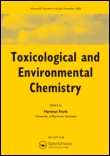
TOXICOLOGICAL AND ENVIRONMENTAL CHEMISTRY
Scope & Guideline
Bridging toxicology and environmental science for a cleaner world.
Introduction
Aims and Scopes
- Toxicological Assessment of Chemicals:
Research focusing on the toxic effects of various chemicals, including heavy metals, pesticides, and pharmaceuticals, on biological organisms and ecosystems. - Environmental Chemistry and Pollution:
Studies that explore the chemical composition of environmental samples, pollutant degradation, and the fate of contaminants in different ecosystems. - Bioremediation and Waste Management:
Innovative approaches to remediation of contaminated environments using biological methods, including the use of microbes and plants. - Health Risk Assessment:
Evaluations of health risks associated with exposure to environmental toxins, incorporating statistical and modeling approaches to predict outcomes. - Nanotechnology in Environmental Applications:
Research on the use of nanomaterials for environmental remediation and their potential toxicological effects.
Trending and Emerging
- Biomonitoring and Ecological Impact Studies:
An increasing emphasis on biomonitoring of pollutants in various organisms, highlighting the need to understand ecological impacts and bioaccumulation of toxic substances. - Advanced Oxidation Processes (AOPs) for Degradation:
A growing focus on the development and application of advanced oxidation processes for the degradation of persistent organic pollutants, indicating an innovative approach to environmental remediation. - Endocrine Disruptors and Health Effects:
Research on the effects of endocrine-disrupting chemicals (EDCs) has gained momentum, reflecting heightened awareness of their implications for human health and wildlife. - Nanomaterials in Environmental Remediation:
A trend towards exploring the applications of nanotechnology in environmental remediation, particularly concerning the efficacy and safety of nanomaterials in degrading pollutants. - Oxidative Stress Mechanisms in Toxicology:
Increased studies investigating oxidative stress as a mechanism of toxicity, indicating a deeper understanding of biochemical pathways affected by environmental contaminants.
Declining or Waning
- Traditional Chemical Analysis Techniques:
While still relevant, there has been a noticeable decline in studies focusing solely on conventional chemical analysis techniques without integration of advanced methodologies or novel applications. - General Ecotoxicology Studies:
Research that broadly examines the effects of pollutants on ecosystems without focusing on specific chemicals or mechanisms has become less prevalent, as more targeted and mechanistic studies gain traction. - Historical Pollution Studies:
Investigations into historical pollution events or legacy pollutants have decreased, potentially due to a shift towards addressing current and emerging contaminants.
Similar Journals

CHEMICAL RESEARCH IN TOXICOLOGY
Illuminating the path to safer chemical practices.Chemical Research in Toxicology is a premier journal published by the American Chemical Society, dedicated to advancing the understanding of toxicological effects associated with chemical substances. Since its inception in 1988, this esteemed journal has maintained a robust impact factor, ranking in the Q1 quartile for both Medicine (miscellaneous) and Toxicology as of 2023, reflecting its significance and influence in the fields of pharmacology and toxicology. With an impressive Scopus ranking at #16 out of 133 in the Toxicology category, it serves as a vital resource for researchers, professionals, and students seeking cutting-edge insights and scholarly articles that bridge the gap between chemistry and toxicological science. Although not an open-access publication, it continues to provide comprehensive analyses and original research that inform safe chemical practices and regulatory policies, further enhancing its role in public health and safety.

Chemosphere
Bridging the gap between chemical research and global sustainability challenges.Chemosphere is a prestigious peer-reviewed journal published by PERGAMON-ELSEVIER SCIENCE LTD, focusing on a wide array of critical topics in the fields of Chemistry, Environmental Science, and Public Health. Since its inception in 1972, the journal has become a vital platform for disseminating groundbreaking research, consistently ranking in the Q1 quartile across multiple categories, including Environmental Chemistry, Health, Toxicology and Mutagenesis, and Pollution. Its esteemed position is underlined by its impressive Scopus rankings, with significant placement in leading subsectors such as Environmental Science and Medicine. Although Chemosphere currently does not offer Open Access options, it remains a valuable resource for researchers and professionals seeking to advance their understanding of chemical interactions and their environmental impacts. The journal serves as an essential asset for students and academics alike, parsing complex issues of pollution, health, and toxicology while fostering inter-disciplinary approaches to remedy global challenges in environmental sustainability.
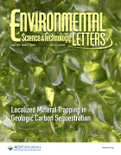
Environmental Science & Technology Letters
Unlocking innovative solutions to ecological challenges.Environmental Science & Technology Letters, published by the American Chemical Society, stands as a premier journal in the realm of environmental science and technology, focusing on pivotal studies that address pressing environmental challenges. With an impressive Q1 ranking in multiple categories including Ecology, Environmental Chemistry, and Pollution, this journal maintains a position of excellence within its field, achieving Scopus ranks that place it in the top percentile of Environmental Science disciplines. Although not open access, Environmental Science & Technology Letters offers vital insights and cutting-edge research that contribute significantly to the understanding and management of environmental issues. The journal’s objectives include disseminating ground-breaking findings and promoting discussions that lead to sustainable solutions. With convergence from 2013 to 2024, it continues to serve as an essential resource for researchers, professionals, and students committed to advancing knowledge and innovation in environmental science.
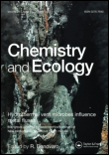
CHEMISTRY AND ECOLOGY
Illuminating the Chemistry Behind Ecological SystemsCHEMISTRY AND ECOLOGY is a prestigious academic journal published by TAYLOR & FRANCIS LTD, dedicated to advancing the interdisciplinary understanding of chemical processes in ecological systems. With an ISSN of 0275-7540 and an E-ISSN of 1029-0370, this journal has been a significant contributor to the fields of Earth and Planetary Sciences, Ecology, and Environmental Science since its inception in 1982. The journal is proudly ranked in the second quartile (Q2) in multiple categories, including Earth and Planetary Sciences and Ecology, reflecting its high impact within these disciplines. Despite not being an open-access publication, it provides valuable insights through rigorous peer-reviewed articles that explore the intricate relationships between chemical phenomena and ecological dynamics. Researchers, professionals, and students can rely on CHEMISTRY AND ECOLOGY for the latest findings and methodologies that drive innovation and understanding in environmental chemistry and ecology, enhancing their work and education in this critical area of study.

Journal of Hazardous Materials Letters
Advancing knowledge on hazardous materials for a safer tomorrow.Journal of Hazardous Materials Letters, published by ELSEVIER, is a premier open access journal that has rapidly gained prominence in the fields of Environmental Chemistry, Environmental Engineering, Health, Toxicology and Mutagenesis, Pollution, and Waste Management and Disposal since its inception in 2020. With an impressive categorization in the top quartile (Q1) across all its relevant disciplines in 2023, this journal ranks favorably within the Scopus database, positioning itself in the upper echelons of Environmental Science—ranked 23rd in Environmental Engineering and 19th in Health, Toxicology and Mutagenesis among its peers. It serves as a vital platform for the dissemination of high-quality research focused on addressing hazardous materials and their impacts on health and the environment. The journal's commitment to open access facilitates immediate and broad dissemination of research findings, ensuring that essential knowledge reaches a global audience of researchers, professionals, and students eager to advance the field. With its ongoing convergence into 2024, the Journal of Hazardous Materials Letters continues to drive innovation and influence practice in managing hazardous materials for a sustainable future.

ARCHIVES OF ENVIRONMENTAL CONTAMINATION AND TOXICOLOGY
Exploring the impact of pollutants on ecosystems and human health.ARCHIVES OF ENVIRONMENTAL CONTAMINATION AND TOXICOLOGY, published by Springer, stands as a leading journal in the field of environmental health and toxicology. With an impressive impact factor, it maintains its stature in the Q1 category for Health, Toxicology and Mutagenesis, Medicine (miscellaneous), and Pollution as of 2023. Since its inception in 1973, this journal has been a crucial platform for disseminating high-quality research that addresses environmental contaminants and their implications on human health and ecosystems. The journal welcomes original articles, review papers, and discussions that deepen our understanding of exposure assessment, bioaccumulation, and toxicological effects of pollutants. While it is not an open-access publication, its commitment to rigorous peer-review ensures that every piece published contributes significantly to the ongoing dialogue within the scientific community. Researchers, professionals, and students engaged in environmental science, toxicology, and public health will find the findings shared in this journal invaluable to their work.

Frontiers in Toxicology
Connecting Researchers to the Heart of ToxicologyFrontiers in Toxicology, published by Frontiers Media SA, is a prominent open-access journal dedicated to advancing the understanding of toxicological science. Established in 2019, it serves as a vital forum for innovative research, offering insights into the pharmacological impacts and toxicological profiles of various substances. With its international reach based in Switzerland, this journal has quickly ascended in the academic community, achieving a notable Q1 ranking in Pharmacology, Toxicology and Pharmaceutics (Miscellaneous) and a Q2 ranking in Toxicology as of 2023. The journal is indexed in Scopus, where it ranks #8 out of 43 in its primary category, underscoring its influence and relevance in the field. The scope encompasses cutting-edge studies on the mechanisms of toxicity, including both human and environmental impacts, making it an essential resource for researchers, professionals, and students alike. By promoting open access to high-quality research, Frontiers in Toxicology plays a crucial role in enhancing knowledge sharing and fostering collaboration across disciplines.
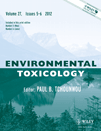
ENVIRONMENTAL TOXICOLOGY
Advancing the Science of Environmental SafetyENVIRONMENTAL TOXICOLOGY, published by Wiley, is a premier academic journal dedicated to the multifaceted study of toxic substances in the environment and their effects on human health and ecosystems. With the ISSN 1520-4081 and E-ISSN 1522-7278, this journal holds a prestigious position in the field, being ranked in the Q1 category across various relevant disciplines, including Health, Toxicology and Mutagenesis, and Management, Monitoring, Policy and Law. The journal regularly publishes high-quality research articles, reviews, and policy discussions aimed at understanding the implications of environmental toxins from 1980 to the present, contributing to the body of knowledge critical for the safety and sustainability of our environment. Researchers and professionals will find a treasure trove of information that not only highlights current trends and methodologies but also sets the stage for future advancements in toxicology. As a key resource, it provides valuable insights necessary for policy-making, environmental management, and public health, reinforcing its significance in the ever-evolving fields of toxicology and environmental science.

BULLETIN OF ENVIRONMENTAL CONTAMINATION AND TOXICOLOGY
Exploring the nexus of contamination and public safety.BULLETIN OF ENVIRONMENTAL CONTAMINATION AND TOXICOLOGY, published by SPRINGER, is a pivotal journal in the fields of Environmental Science, Toxicology, and Public Health. With a strong history of dissemination since its inception in 1966, the journal predominantly focuses on the latest advances in understanding environmental contaminants and their toxicological effects on health and ecosystems. It currently holds a respectable Q2 ranking across multiple categories including Health, Toxicology and Mutagenesis, Medicine (miscellaneous), and Pollution, as per the 2023 metrics. While the journal is not Open Access, it provides an invaluable platform for researchers, professionals, and students seeking to contribute to and stay informed on critical issues regarding environmental hazards and their implications. With an engaged community of scholars and practitioners, this journal continues to be an essential resource for addressing the pressing challenges of environmental contamination and its health impacts, guiding future research and policy decisions.
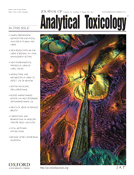
JOURNAL OF ANALYTICAL TOXICOLOGY
Bridging Chemistry and Public Health for Impactful SolutionsJOURNAL OF ANALYTICAL TOXICOLOGY, published by Oxford University Press Inc, stands as a leading platform in the field of analytical chemistry and toxicology, focusing on the rigorous exploration of methodologies and advancements in the detection of toxic substances. Since its inception in 1977, this journal has continually contributed to the scientific community, providing researchers and professionals with vital insights into chemical health, safety, and environmental implications. With an impressive Q1 ranking in both Analytical Chemistry and Chemical Health and Safety, along with reputable Q2 rankings in Environmental Chemistry and Toxicology, the journal maintains its critical standing in vibrant academic communities, ensuring the dissemination of high-quality research. Although it currently does not offer open access, articles are made available via institutional subscriptions, allowing widespread access to its valuable findings. Located in the United States, the journal contains a wealth of knowledge poised to benefit scientists and scholars engaged in toxicological research, emphasizing its importance in enhancing public health and safety.